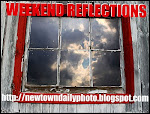The origin of "Mountain Burning Ceremony" was based on a ghost story. According to an old story, a ghost haunted around a small tomb on the top of the mountain and scared people. So, they decided to burn the entire mountain to console the ghost's spirit. Since then, every January Mt. Wakakusa Burning Ceremony has been held. In Japan fire is used for purification both in Shinto( indigenous religion of Japan) and Buddhism. This ceremony dates back to 1760.
I visited Heijo Palace Site, which was the center of Japan in 8th century, to enjoy viewing the ceremony. This year it was held on January 22nd.
In east, night started.
This structure is the reproduction of the ancient Imperial Audience Hall.
Six hundred fire works were set off and adorned the night sky.
The entire mountain was set ablaze.








When I lived in Nara Pref., I saw that ceremony only once. I found it so terrific. I wish I could have been there more than once.
ReplyDeleteThe last photo is just breathtaking!
Thanks for sharing and have a wonderful day.
Great, I like the first one
ReplyDeleteMuchas gracias por tú comentario amigo, tienes unas fotos nocturnas muy bonitas.
ReplyDeleteSaludos.
Beautiful and stunning report of "Yamayaki"! It's amazing that many time-honored ceremonies and festivals have been conducted with (almost) no interruption in Japan, which is precious asset.
ReplyDeleteThis is one of my favorites among all your wonderful posts. Thank you.
Thank you for letting us know that the antique and elegant festival in Nara has a mysterious history.
ReplyDeleteIt's the most intriguing mountain-burning event.
池に浮かぶ平城宮跡大極殿。これぞ奈良!圧巻です。
your pic is amazing, everyday i learn new things on japan, very enlightening
ReplyDeleteVery impressive shot, the last one. It is my favourite.
ReplyDeleteBeautiful photos! I like them a lot!
ReplyDeleteThanks so much for these fantastic photos!!
ReplyDeleteI have not been to that newly built "大極殿”yet.
I hope I'll visit it in the near future!!
奈良にお住まいで羨ましいです。平城京遷都1300年祭でさまざまな催しがあって見どころもいっぱいだったでしょ?いいなぁ! 私は遷都1300年関連で東京国立博物館で開催されていた「東大寺大仏 天平の至宝展」でがまんしました(笑)
若草山は小学校の遠足でお弁当を食べました!なつかしい!
What a fascinating post!
ReplyDelete«Louis» thanks you for visiting San Francisco Bay Daily Photo.
I didin't know the origin of "Yamayaki".
ReplyDeleteIt's very interesting .
Thanks for letting us know the story .
I like the last one , amazing !!
The story from you about the event is more romantic one than that I know which tells a fight between sects of Buddhists. The picture with shimmer on the water is beautiful!
ReplyDeleteThank you for leaving your kind and encouraging comments. I'm grateful to all of you!!
ReplyDeleteThe origin of "Yamayaki-Mountain Burning ceremony has a few theories.
One of them is based on the ghost story.
Several years ago,the custom of burning Mt. Wakakusa started to end the boundary dispute between Todai-ji Temple, Kofuku-ji Temple and Kasuga Grand Shrine. This theory was the mainstream.
However, now officialy the ghost story is admitted. I supporse the reason is that the dispute theory doesn't sound nice.
Thanks again. See you!!
Daigokuden looks magnificient! Is it a pond that reflects the building? I didn't notice that when I visited it. It's impressive in the pitch dark.
ReplyDeleteHello snowwhite.
ReplyDeleteThe heavens of the navy blue.
It is the profound expression that is good for the ancient city.
Thank you for your visit.
Good weekend.
ruma